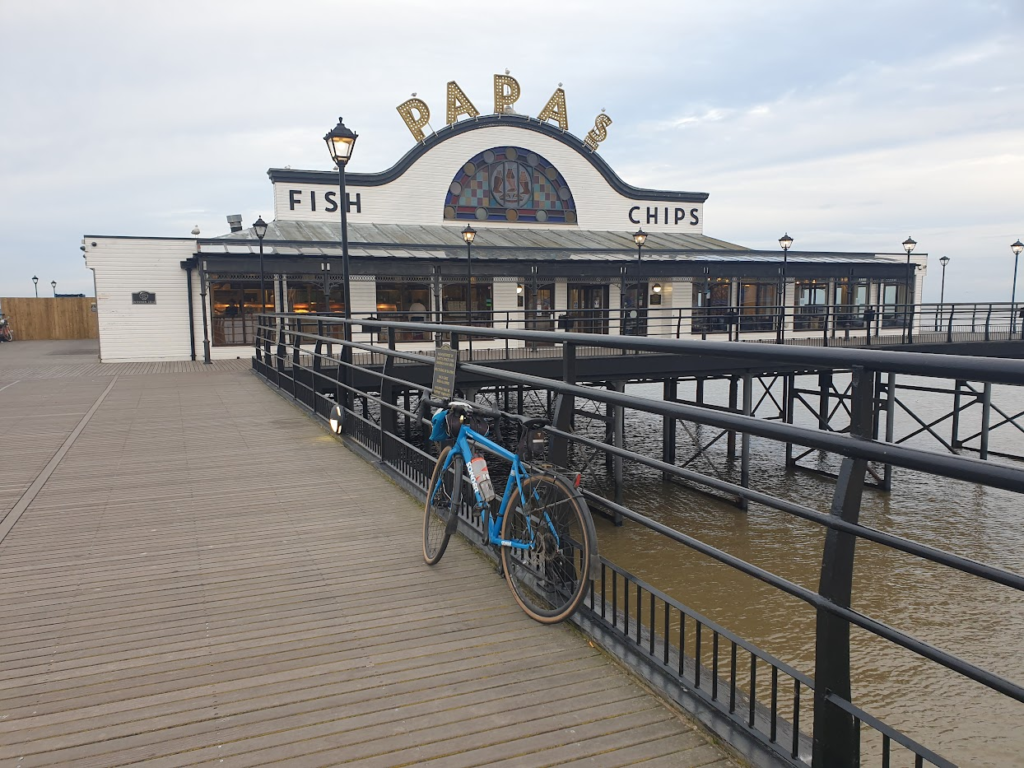
Today was the one time in this entire adventure that I could leave my own house on a bike and simply ride. I was in my own OS Map, Landranger 110, where I ended the day yesterday after starting on the west coast. Today I would ride all the way to Cleethorpes on the east coast: a crossing of the country in just 2 days and 190 miles.
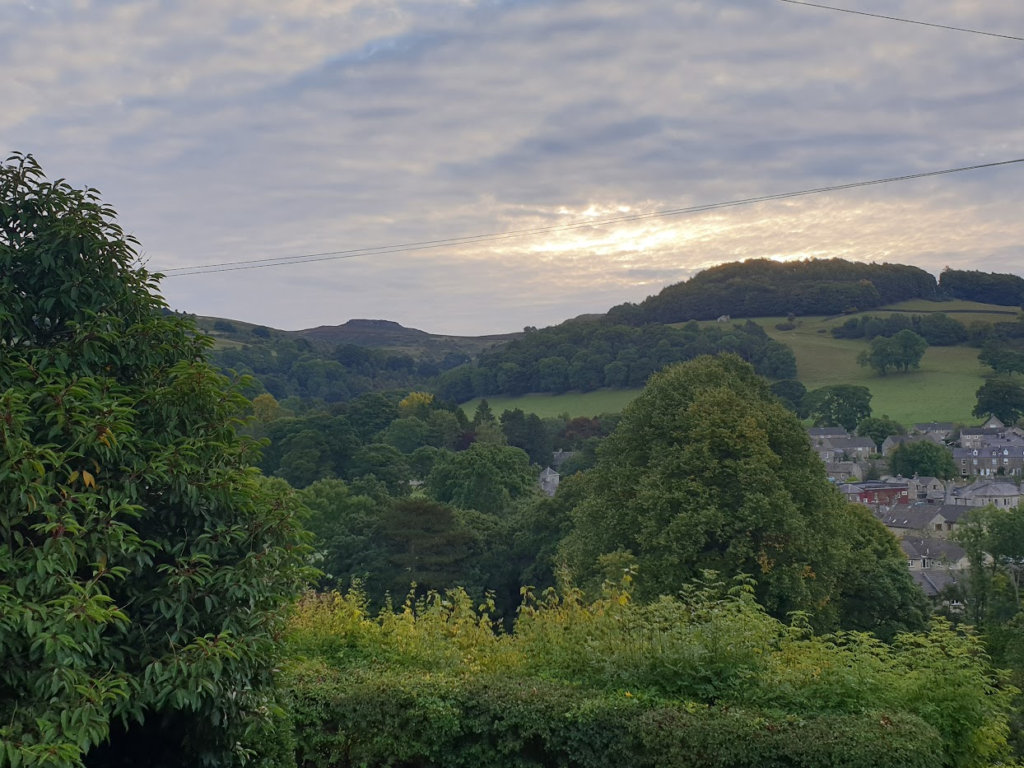
I have cycled to Cleethorpes many times. It has become something of a tradition for me and I typically do it at least once every year. There are many possible routes and I have enjoyed getting there different ways, always trying to avoid main roads wherever possible. Which, usually, is most of the 100 plus mile way. It is a good place to cycle to for several reasons. First, it is at the end of a rail line that has hourly trains back to Sheffield, from where I can get another train right to my village. Second, it represents an emphatic end to the ride, because you literally run out of land. Third, you can get great fish and chips to eat on the train home. Fourth, there is a pub right in the train station. Under the clock. Literally. It is one of the smallest pubs anywhere; but not the very smallest in Britain – that awards goes to another Cleethorpes pub! It makes sense to get an early start for this long ride if you want to take advantage of all of this without time concerns. So I left home in the bracing cool air of an early autumn day at 7.30am, wondering if I might have been better off in full gloves.
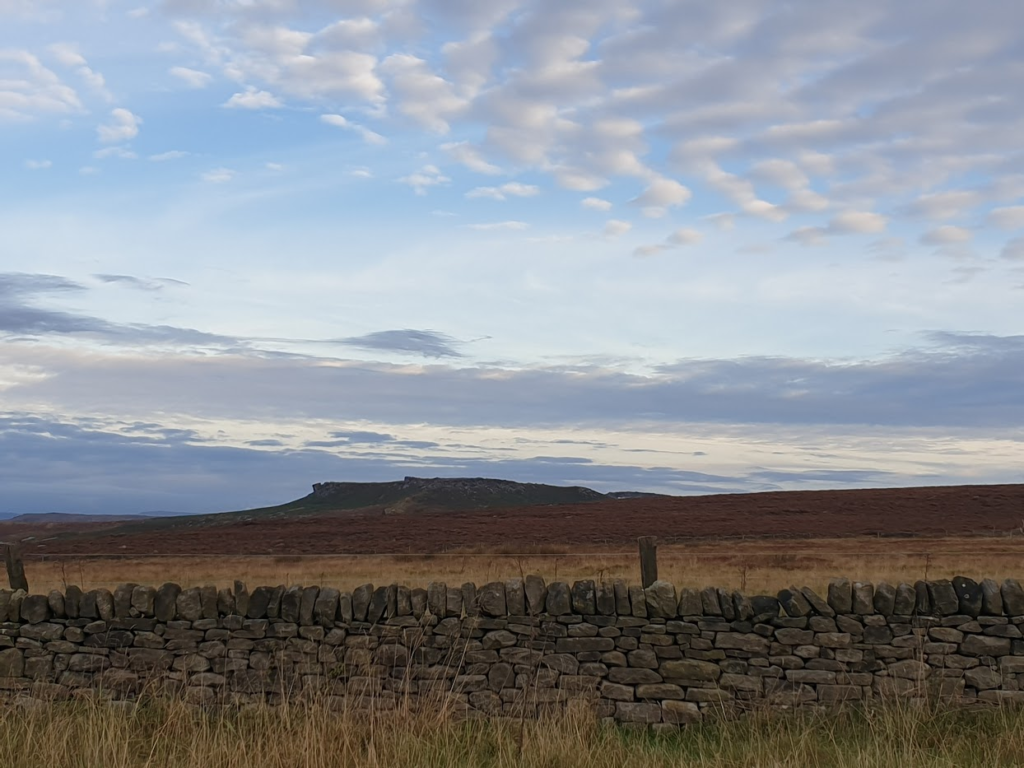
The biggest hills on a Cleethorpes ride come at the very start. It is a long, tough haul out of the Hope Valley towards Sheffield. The countryside here in the eastern fringes of the Peak District National Park is beautiful. I am so familiar with this area that I had to remember to stop and take a couple of photos. Once you are over the hill, things change quickly and before you know it you have descended into the suburbs of Sheffield. I usually avoid Sheffield by heading a little further south; but not today because that would mean leaving the map (111) and breaking the rules of the trip. And that wouldn’t do. We are not talking much, because I live at the very bottom of my map and the road to Sheffield is the bottom border of the sheet. But it forced me into a change of start. It worked out well, in fact, because early on Sunday morning is an excellent time to cut across the edge of a city and even use some of the main roads where it made sense. The next big milestone comes with the crossing of the M1 motorway, around the Yorkshire / Derbyshire / Nottinghamshire border country. By the time I did that, 90 minutes or so into my ride, I was back on my usual roads and ready for a breakfast stop soon after, which I made at a strange little cafe by a fishing lake on the site of an old coal mine. Such is the nature of this part of England, which is close to where I grew up and therefore both familiar and, in some ways, not any more.
Since leaving home at the age of eighteen, I have never felt a great connection to this area. All my remaining family and friends have either died or moved away, and I am lucky to now live somewhere more wonderful. So, to be honest, this part of the country – let’s call it North Nottinghamshire – is always rather dull and disappointing to me these days. Today was a decent day; but it wasn’t bright and sunny, which I find always makes even dreary places look better. The best you could say about this flat country of ploughed fields is that it is unremarkable. So, for a while at least, I concentrated on just racking up the miles. I passed within 5 miles of the very small town of Bawtry (once, proudly, the smallest in England, until it grew), my former home; but I didn’t feel the need to visit. Instead I headed directly for one of the two possible crossing points of the River Trent available to me in this map journey, at Gainsborough. This took me past some of the more pleasant spots I used to visit as a child, where we would go on gentle family walks. I stopped for a short time at Drakeholes, where the Chesterfield Canal turns through 90 degrees and goes through a tunnel. Here also is a fine old pub, known variously as the White Swan, then the Griff Inn, and now, back after a lengthy period of closure, its old nickname, the Mucky Duck. It was nice to see a reversal in pub fortunes in this location that does hold happy memories for me. It was even the venue for a couple of family celebrations over the years. Much better vibes than metal shutters and a weed covered car park. Hooray.
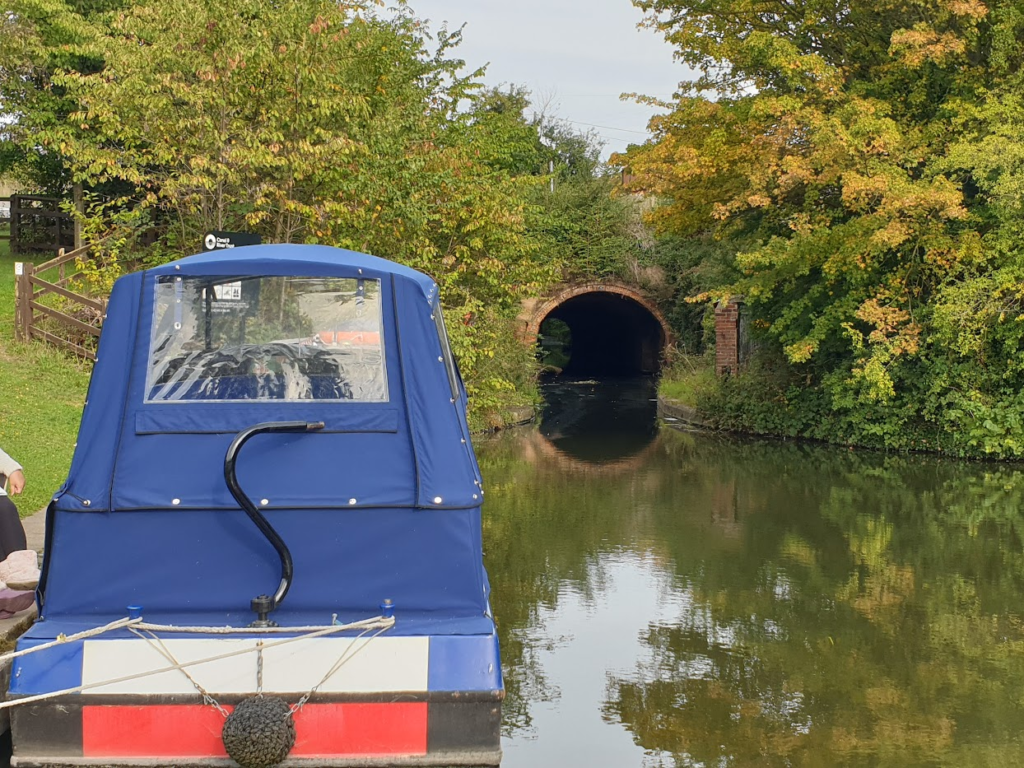
The next village along the lane is the pretty Clayworth. In St Peter’s church here are some beautiful wall paintings, the Traquair Murals, created by the notable Edinburgh based Scottish artist Phoebe Anna Traquair in 1904 and 1905. She was a major figure in the Arts and Crafts movement and her body of work is considerable. It includes murals in six public buildings: four in Scotland and two in England, including this one. Somehow, we never knew about this local treasure when we lived only six miles away. I am not sure how. It would have been right up my dad’s street. But now there are brown tourist signs alerting the passing cyclist and they are well worth stopping to see.
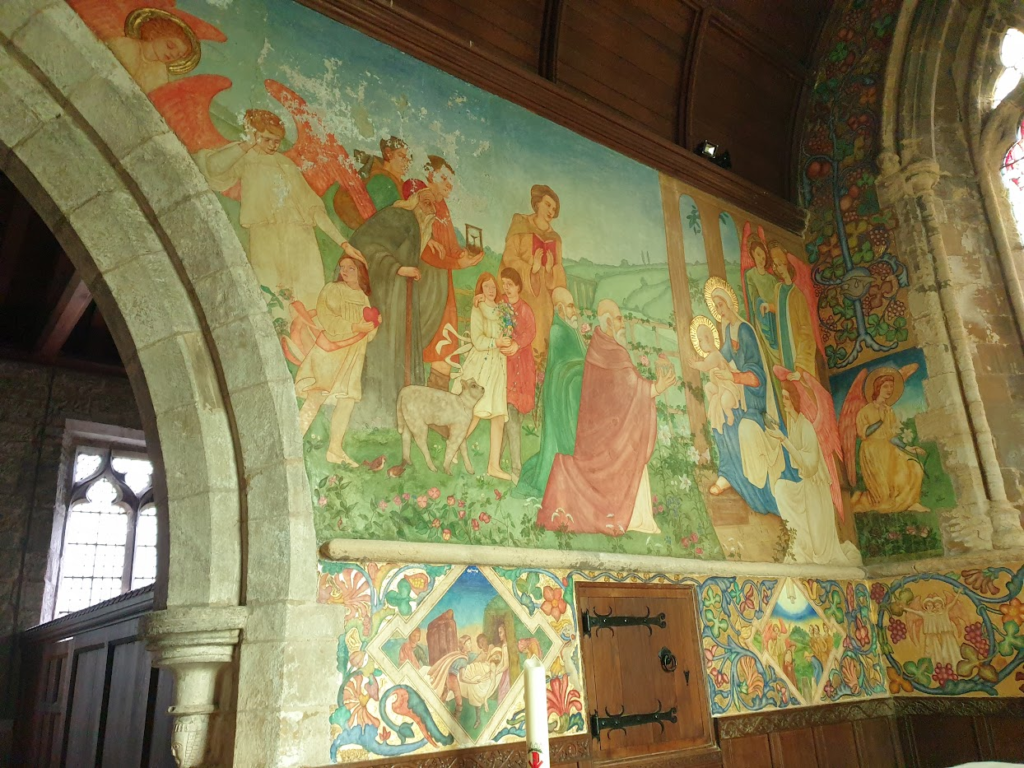
From Clayworth there is a gentle climb up to the village of Gringley on the Hill. The clue is in the name. For these parts, it is a lofty place. You can see for miles across the otherwise flat landscape, all the way north to the distant steelworks of Scunthorpe, and south east, past two huge power stations visible from above Hathersage, 50 miles away, to Lincoln Cathedral. That is a vertical span of three OS maps from one relatively small hill. Not bad. We used to come sledging here if it snowed and it was really surprisingly exciting. There was a hand painted sign on Beacon Hill saying “No Sledging”, which everyone ignored. On the way up from Clayworth I chatted to another local cyclist, Dave (ironically a native of Cleethorpes), who hitched a draught on my back wheel. He spoke about the climb as if we were in the foothills of the Alps, and indeed that is how I remember it feeling as a teenager. Now I live in proper hills and it seems like nothing much at all. But it is still a very pleasant place.
Dave also came good with some advice. I wasn’t looking forward to the two miles of busy main road to the bridge at Gainsborough; but Dave told me that if I took another quiet lane to a place called Trent Wharfage, I could cycle on a tarmac path along the top of the river flood-bank right up to the bridge. And he was right! Again, how come I never knew this before? Better late than never. Thanks Dave!
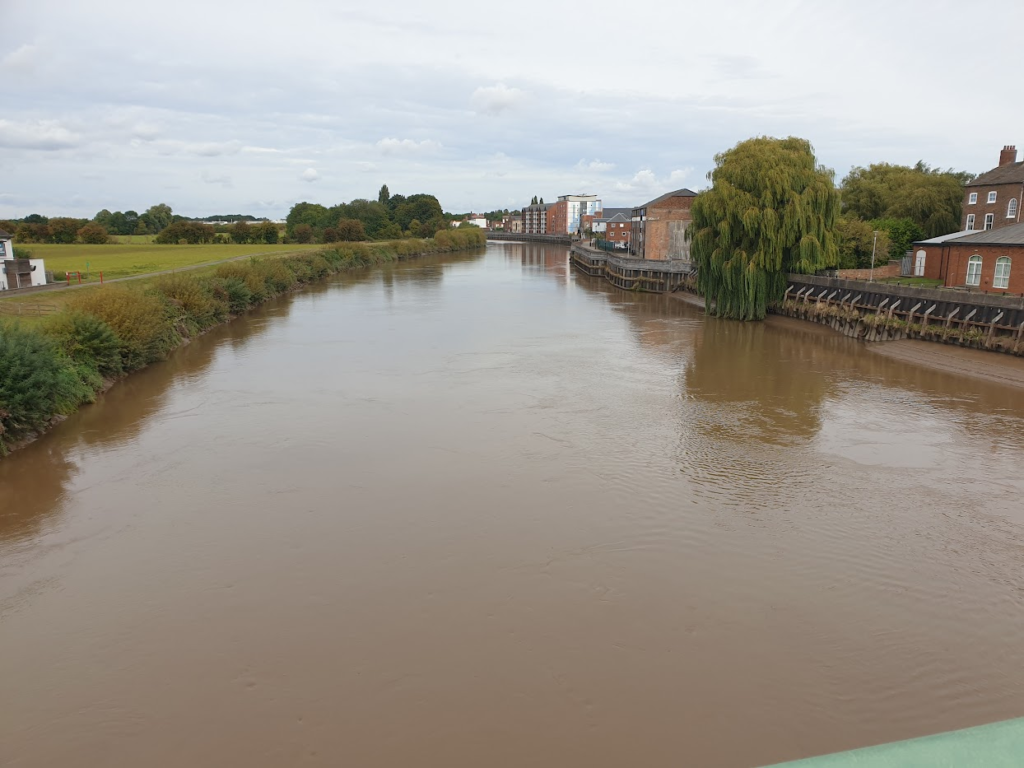
The River Trent, by British standards, is a big river. Gainsborough lies about 20 miles south, or upstream, of the point where the Trent and the Ouse come together to form the Humber; but it is still tidal here, 50 miles as the crow flies from Spurn Head. The Trent (like the Severn) has a tidal bore, a kind of wave, that travels upstream in the right conditions. It is known as the Trent Aegir, and I saw it once. You can look up the best times to see it and, as a curiosity of nature, I am glad I did. But today the water looked its usual sluggish brown as it flowed past Gainsborough and its old warehouses and wharves. This is the town of St Oggs in George Elliot’s novel ”Mill On the Floss”, but today there are no boats here, except the odd passing pleasure craft. Gainsborough has a slightly stuck in the past feel but it provided a nice lunch and marked exactly half way in today’s ride. It’s other notable sight is the Old Hall, which is a large, half-tmbered relic of mediaeval times that somehow survived almost unaltered.
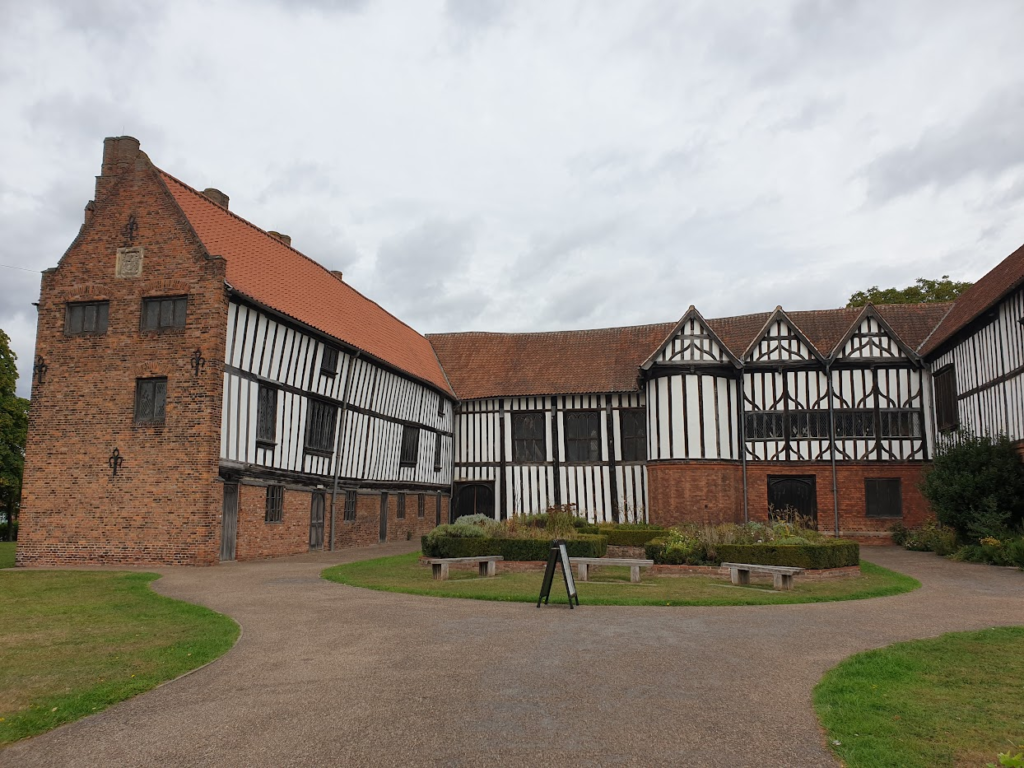
After Gainsborough, my ride crossed many more miles of gentle farmland and the odd quiet village. But nothing to delay my progress. After another 90 minutes of riding I reached the small town of Brigg, pleasant enough but, again, unremarkable. It did, however, offer a rare bridging point over the modest River Ancholme. Connecting these bridges shapes the ride, and limits your options. Usefully, though, it also took me right past Cooper’s Corner Cafe in the village of Howsham, a must stop for any passing cyclist. I sat in my own gazebo (shed, really), sheltered from the cool breeze, and enjoyed tea and cake with my own phone charging point and everything!
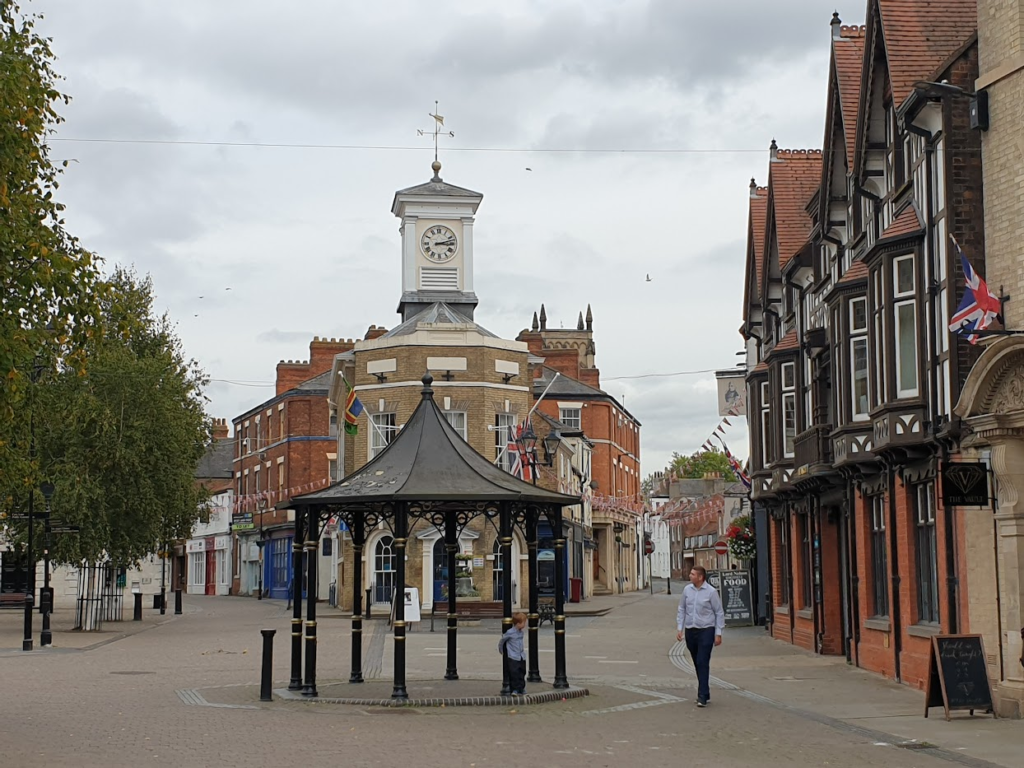
The final sting in the tail of a ride to Cleethorpes is the crossing of the Lincolnshire Wolds. These are the continuation of the Yorkshire Wolds and they disprove the idea that Lincolnshire is flat. It is a pleasant area and a good end to the ride; but nothing to be scared of. After a modest climb up from the small Roman town of Caistor, and half an hour of long, undulating, empty lanes between wide verges and high hedges, the road swooped down again to begin its approach to the coast. I passed through the affluent looking suburbs of Waltham and Humberston and into North East Lincolnshire, better know as Grimsby and Cleethorpes, which are contiguous. For a few decades, this conurbation was lumped together with Hull as the newly created county of Humberside. No-one on either side of the Humber really wanted it and, until the Humber Bridge was opened in the late 1970s after several false starts, the two sides were not even physically connected. Now, Cleethorpes and its neighbours are happy to be back in Lincolnshire, Old Lincs have been restored!
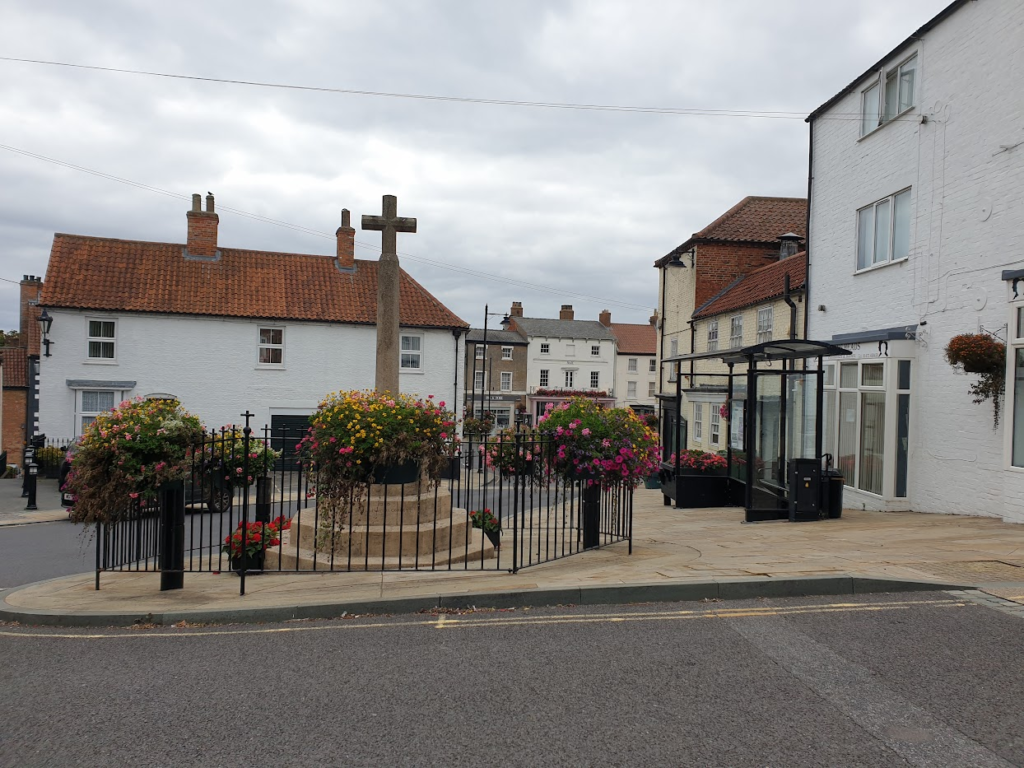
I always enjoy arriving in Cleethorpes. It is a small thrill to turn a corner and suddenly find yourself riding along the mile or so of sea front to the pier. It is a kiss me quick sort of place, more cheerful than stylish, but it makes me smile. I wouldn’t come here for a holiday, but a couple of hours is easily spent in good weather. I will be back again, for sure. I bought my fish, chips and mushy peas, along with the obligatory can of Dandelion and Burdock, and settled in to a very quiet train for the journey home. And with that, the country had been crossed again. And tomorrow, I dip my toe into Wales for the first time in this adventure. Another milestone.

